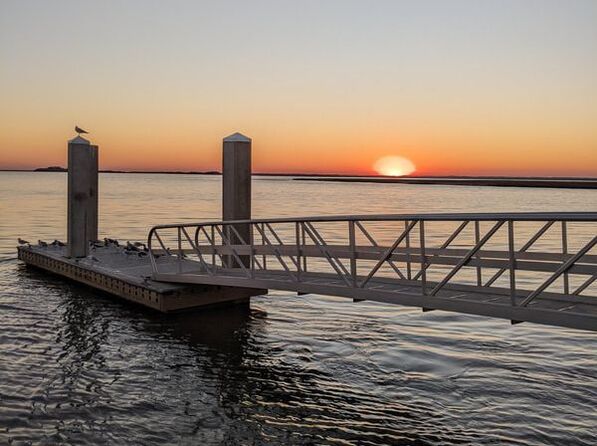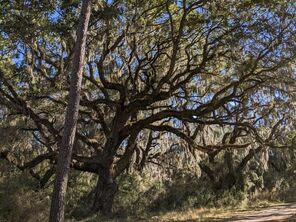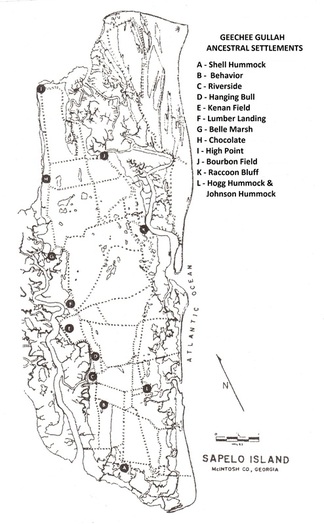See What's New, Family...
It's Time to Come HomeMark your calendars & make plans to join us on Sapelo for a family meeting. Saturday, Oct 29, 2022 | RSVP Now
|
Living Descendants
|
Sapelo Island Heirs Property Survey |
From a cultural perspectiveWhen the Civil War ended in 1865, land ownership rights were made available to formerly enslaved Gullah Geechee people on the plantations. Moreover, formerly enslaved Gullah Geechee people that lived off of the plantations were also afforded land ownership rights. When land ownership rights were deeded or recognized, the Gullah Geechee culture on Sapelo Island established thirteen distinct Gullah Geechee settlements. The total land acreage consisted of at least 2,700 acres. According to the culture, the settlements are Shell Hummock, Behavior, Riverside, Hanging Bull, Kenan Field, Lumber Landing, Bell Marsh, Chocolate, High Point, Bourbon Field, Raccoon Bluff, Hogg Hummock, and Johnson Hummock.
|
Even though landowner rights were made available to formerly enslaved people on the island, a strategy had to be initiated to ensure that the lands could be legitimately passed on to future generations. In 1871, the Hillery & Co. (formed by formerly enslaved men of Sapelo Island) purchased with U.S. currency a 1,000+ acre tract of land known as Raccoon Bluff. Subsequently, land was purchased in the other settlement communities and therefore legitimized the historic indigenous culture of Sapelo Island.
The historic indigenous culture of Sapelo Island began to be impacted by systemic deprivation. Three primary individuals impacted the systemic deprivation that occurred to the Gullah Geechee culture during the early part of the 1900s. These three individuals were Howard E. Coffin, R.J. Reynolds, Jr. and Anne Marie Reynolds. The primary strategy for sustaining the deprivation of an indigenous culture is to seize control and ownership of the land. Coffin, founder of the Hudson Motor Company in Detroit, MI, went to Sapelo Island and purchased land. Later, R. J. Reynolds, Jr. of R. J. Reynolds Tobacco purchased all of Coffin’s land. Reynolds, through scare tactics and land grabs forced the Gullah Geechee people to re-locate, dis-establishing their communities. Reynolds’ widow Anne Marie later sold the lands that originally belonged to the Gullah Geechee people to the state of Georgia for four million dollars.
During the latter part of the 1900's, the systemic deprivation of the Sapelo Island indigenous culture was impacted by public policy of government instrumentalities of the state of Georgia. Those instrumentalities are the governors, state departments, the Sapelo Island Heritage Authority and McIntosh County government.
The regeneration of the indigenous culture on Sapelo Island began in 2008 with data collection and research initiated by leaders of the Gullah Geechee culture on Sapelo. Three cornerstones have been established to initiate remedies for the deprivation of our indigenous culture and implement strategies for the regeneration of our culture under the auspices of Solutions on Sapelo (SOS). Those three cornerstones are the Raccoon Hogg Community Development Corporation, the Gullah Geechee Culture Initiative and HELP ORG INC.
The historic indigenous culture of Sapelo Island began to be impacted by systemic deprivation. Three primary individuals impacted the systemic deprivation that occurred to the Gullah Geechee culture during the early part of the 1900s. These three individuals were Howard E. Coffin, R.J. Reynolds, Jr. and Anne Marie Reynolds. The primary strategy for sustaining the deprivation of an indigenous culture is to seize control and ownership of the land. Coffin, founder of the Hudson Motor Company in Detroit, MI, went to Sapelo Island and purchased land. Later, R. J. Reynolds, Jr. of R. J. Reynolds Tobacco purchased all of Coffin’s land. Reynolds, through scare tactics and land grabs forced the Gullah Geechee people to re-locate, dis-establishing their communities. Reynolds’ widow Anne Marie later sold the lands that originally belonged to the Gullah Geechee people to the state of Georgia for four million dollars.
During the latter part of the 1900's, the systemic deprivation of the Sapelo Island indigenous culture was impacted by public policy of government instrumentalities of the state of Georgia. Those instrumentalities are the governors, state departments, the Sapelo Island Heritage Authority and McIntosh County government.
The regeneration of the indigenous culture on Sapelo Island began in 2008 with data collection and research initiated by leaders of the Gullah Geechee culture on Sapelo. Three cornerstones have been established to initiate remedies for the deprivation of our indigenous culture and implement strategies for the regeneration of our culture under the auspices of Solutions on Sapelo (SOS). Those three cornerstones are the Raccoon Hogg Community Development Corporation, the Gullah Geechee Culture Initiative and HELP ORG INC.




